Wood antiquing is my favorite subject. But I don't think that was news to anyone. I love writing about this topic and sharing with you the knowledge I have gained over many years of working with wood finishing products. For those less familiar with the term, antiquing wood means artificially aging it. It is achieved with special techniques and products that can be applied either directly to the wood or to already finished furniture.
Most people interested in antiquing want to change the look of a piece of furniture they have had for some time. The fact that it is already old is an advantage in this case, because the furniture certainly has some signs of the passage of time: dents, chipped edges, scratches, etc. If the marks are not there, they can be made with very simple tools:
- a bag containing screws and nuts of various sizes. You hit the furniture from place to place with it
- a piece of chain with larger links. And it's also used to strike furniture
- a screw and a hammer. Make marks on the wood as in the pictures below


- a pestle or rasp with which to scissor and mark the edges
- a hammer with a rounded head for tapping furniture
- nails of different sizes randomly hammered on the back of a brush. It is used to make curry holes
Virtually any blunt object can be used to leave the impression of the passage of time. In fact, the process of antiquing is very much up to the imagination of the individual and the tips are merely indicative. From them everyone can make their own tools.
The same techniques are used when making furniture from scratch that has to look old. In this case the marks are made at the very beginning, before the finish is applied, on the wood in white as they say. After refinishing, these marks will look as if the furniture has been knocked over time and beveling has occurred.
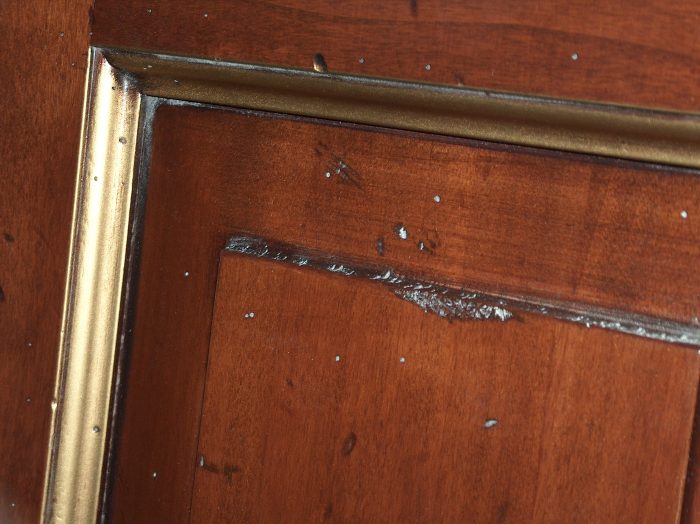
To make a piece of furniture look old the easiest way is to paint it a different color, then sand its edges down to the original color and even wood. The process is called distressing, but you can also find it with the term consuming or burning the edges. It's simple to do, and if the color is applied with a brush, the aged effect is even more pronounced. Because you are likely to get to the wood when sanding the edges it is best to apply a clear varnish on top. The varnish does not have to be very glossy because it is hard to believe that old furniture shines. Low-gloss varnishes and even natural-effect varnishes (no sheen) are very good for such finishes. Before applying the varnish, check the compatibility of the layers.
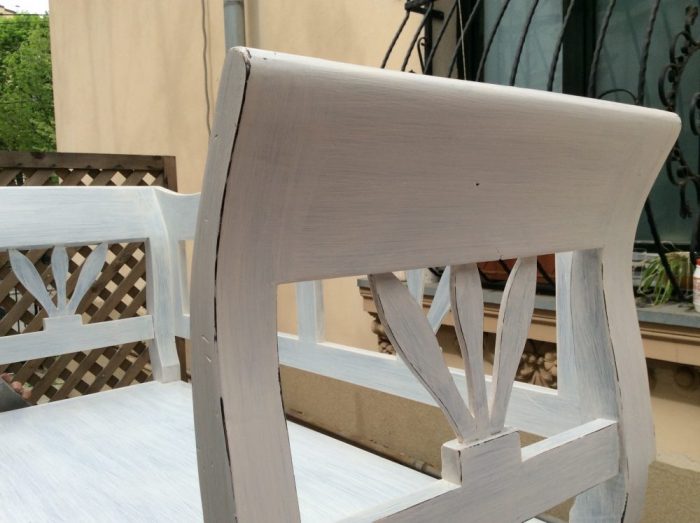
If you want an even older, more rustic look (like long-used country furniture) sanding can also be done on the surface of the furniture. But make sure that nothing looks overdone or unnatural. Try to imagine the places where the furniture would normally "take" the knocks, and do the sanding there. Always have the big picture in front of you, the furniture as a whole, don't think of each door or drawer in isolation. They may look great separately, but together it all becomes exaggerated, out of touch with reality. Antique furniture means furniture that has been used for a long time, and all the processes should lead to this, not to the look of new furniture that has been knocked, scratched and scuffed.
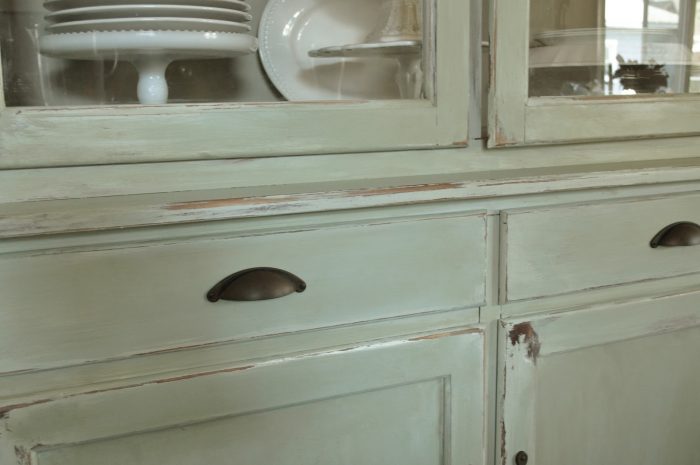
Aging patinas can be used to emphasize the aged look. These are generally dark colors (walnut, dark walnut), but green (mildew-like) or bluish-gray patinas, which resemble weathered wood, also give a very authentic look. In the case of furniture that has been painted and then sanded on the edges, the patina is applied to the entire surface. You can use patinas that can be sanded with abrasive sponges or steel wool (much finer look) or patinas that can be wiped off.


A very interesting look is given by the metallic metallic runners. When applied discreetly, they brighten up furniture. The most beautiful effects are achieved with bronze patinas. If used with care, the gold also gives an interesting, precious look. Silver is cooler, more distant and needs to be well matched to the pattern to be believable.
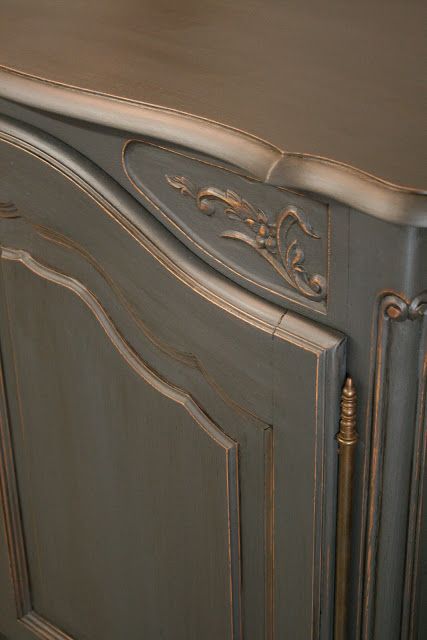
The same aged look is achieved by applying colored wax all over the surface. I used shoe polish at one time. Mind you, not solution but shoe polish. The brown one worked best.
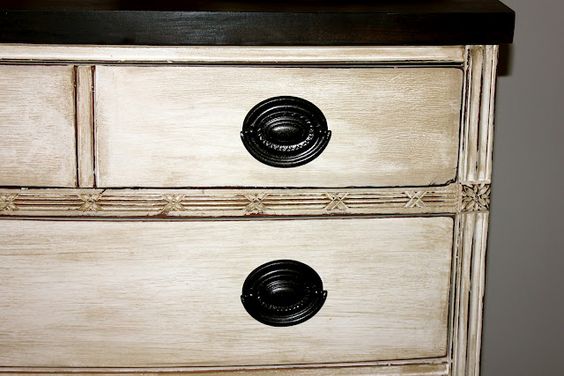
A very interesting look can be achieved by structuring the wood, i.e. bringing out the pattern of late and early wood. The later wood, being harder, remains in relief and the softer early wood is superficially removed. Thus, when you run your hand perpendicular across the wood, you will feel the relief pattern. It can be done using round wire brushes fitted to a drill. The furniture must be solid wood.
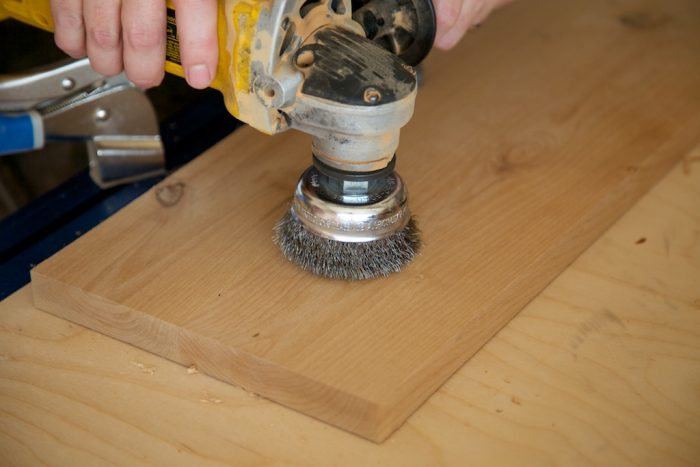
You cannot get structured wood on veneered panels. If you want to structure, for example, an old table top, there is no need to remove the finish, the wire brush will do all the work. If some color remains it is even better. The old effect will be even more emphasized.
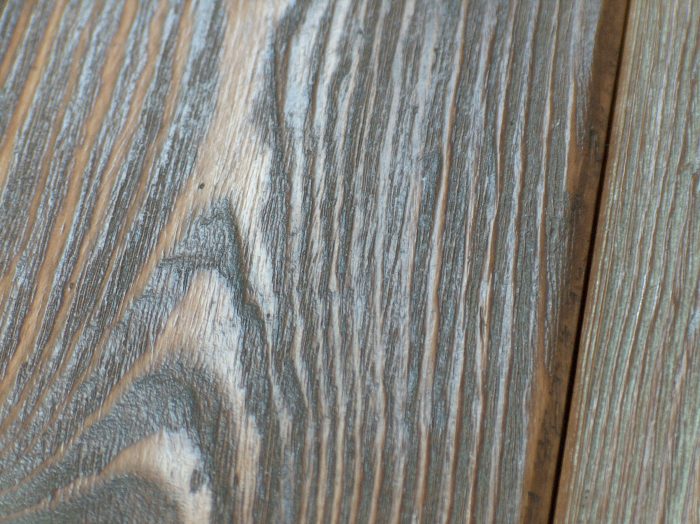
Structuring also looks great on fir or oak floors. A very nice effect is achieved if you apply a coat of paint over the structured wood and then sand. Sanding can be done in 2 ways: you can either remove the paint only from the late wood, which emphasizes the design even more, or you can insist on leaving some of the paint on the wood, which gives the effect of "washed" wood, i.e. lightly painted, but still showing the wood unevenly. The washed effect also looks good on unstructured wood.
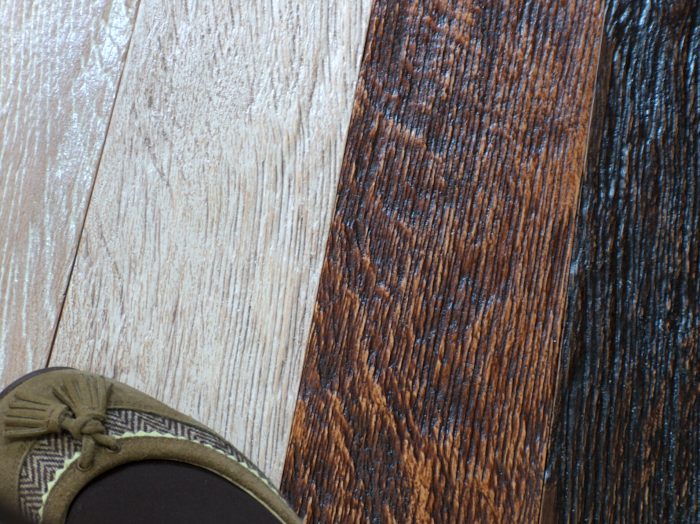
The subject is a very offering one and there is much more to be said about it. But I think it's good to stop here with the promise that I'll be back with a part 2 (and probably part 3) very shortly.
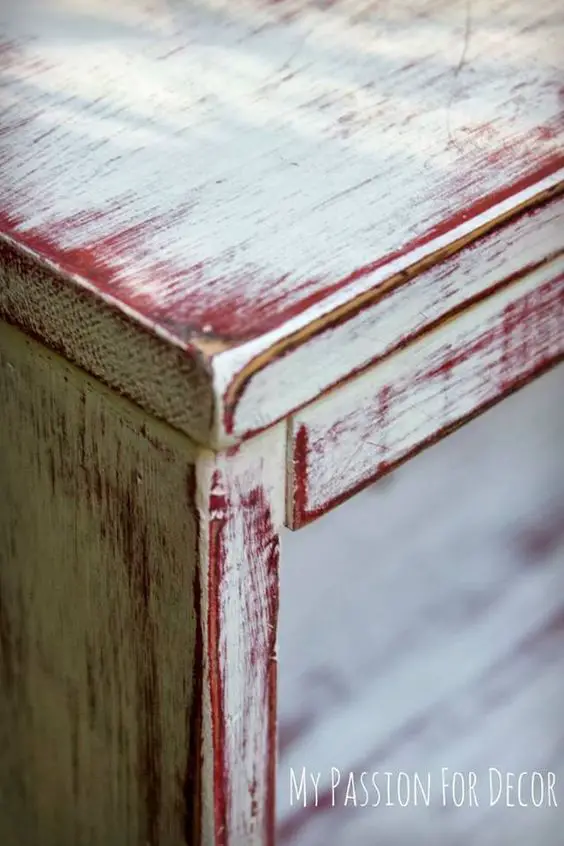




























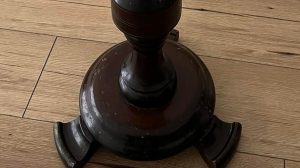
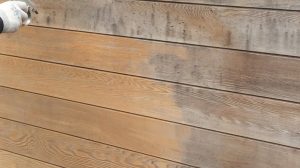

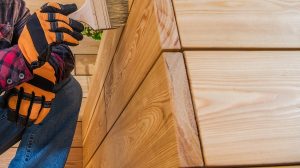
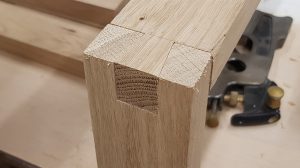



What primers, paints are for wood-MDF?
For spray finishing MDF the best system is the pigmented polyurethane: 2 coats of white primer, sanding, one coat of white or coloured varnish (gloss or matt).
You can find more information here.
All the best.
Hello,
I really appreciate your site, even though I don't deal with furniture everything I read here I enjoy like stories and try to apply the information to my home.
I have a big request, to help me with some advice. I want to buy from a certain furniture outlet a rubberwood chest of drawers that is very dark, and I would like to paint it in white-beige with vintage effects. I have chalk paint and wax from Borma Wash , I have never used them, and in my mind this process should not be difficult but I would like to not fail . How do I go about changing the colour of the furniture?
Thank you very much!
Hello,
Thanks for your appreciation!
You should lightly sand the furniture before applying paint or wax. You can sand with fine sanding sponges that you can find at DIY stores. In sanding forms you can find here if here. Sanding helps to remove dirt and any previously applied materials that might prevent adhesion. After sanding, remove the dust and apply the paint. Read the application instructions beforehand to see if you need to thin it. For wax there is no need to sand. Simply wipe all the furniture with a cloth with water and detergent, then with a dry cloth. Let it dry thoroughly for a while and then you can apply wax. Apply it in a thin layer and spread it very well. Then polish with a soft cotton cloth. You can also apply the paint and then the wax and in this case there is no need to clean the furniture before applying the wax. Good luck.
Thank you very much!
Let's get my courage up....
A wonderful day!
Hello,
while waiting for the "victim" (the convenient) I look on youtube in search of information about reconditioning, painting, varnishing furniture etc.. and I have seen people who use a solution of vinegar and water to remove the dust, with which they gently wipe the surfaces of the furniture. So I come back with the question if for dewaxing I have to wipe the furniture with something special or is a soft rag enough. I also remembered that it's good to paint immediately after dewaxing so I'm taking a weekend off from all the work.
Thank you!
Vinegar is used for degreasing. Wax-containing solutions (Pronto, for example) are used for furniture maintenance. Varnish cannot be applied over wax because it has no adhesion. That is why, after sanding, it is sanded with vinegar solution. For safety. I think that if the sanding is well done, there is no need for vinegar and you can only sand with a soft cotton cloth. If you want to be sure, you can also use vinegar.
The varnish should be applied on the day of sanding. If you do the sanding today and the sanding tomorrow, it's no good again. 🙂
Good luck!
It's very hard to find tips for DIY projects in Romanian and I'm glad I found this article. I have a solid wood chest of drawers that I want to sand and paint with water based matte paint, because chalk paint seems too expensive, plus I also need wax from the same range at the end which is just as expensive.
I want to ask you something because I see you have a lot of experience:
Can I apply brown shoe wax over white water-based paint for an antiquing effect? If so, do I need to add anything else to protect the antiquing effect, or is brown wax enough to hold?
If not, what do you advise me to use to get that antique brown effect in the wood pattern, other than chalk paint products?
Good evening.
You can use shoe polish, but the classic kind, not the modern kind in those tubes with the sponge at the end. We recommend not applying too much and spreading it well, so that not too much is left in one place. You can only apply wax over wax. I recommend applying a layer of colourless wax over the coloured wax. Ordinary commercial floor wax. Leave the coloured wax to dry for at least 24 hours, then apply a thin layer of colourless wax, also in a thin layer, well spread.
If you apply wax to the sanded paint, more will stick. Without sanding, less will remain on the surface.
There are also patinas for effects on furniture, but the simplest is with wax.
To avoid unpleasant colour surprises, try a more hidden part first to see the effect. If you are happy, apply to the rest of the furniture.
Good luck!
Don't forget to subscribe to the printed Wood Magazine! For only 58 lei/year you can find out news in the field, discover craft ideas or trade secrets. We remind you that the content in the printed magazine is different from the one on the website. Details in the link below.
Thank you!https://revistadinlemn.ro/product/abonament-revista-din-lemn/
These suggestions are fantastic! I love the idea of using traditional techniques to achieve an authentic antiquing effect. I can't wait to try these methods on my furniture pieces! Thanks for the inspiration!